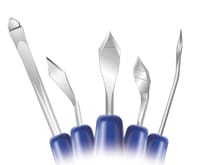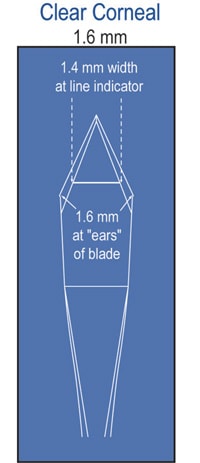instrument
insider
Sharpoint Sub-2mm Knives for Micro-Incision Cataract Surgery
Reviewed by Mark DiPillo, M.D.
|
|
|
|
The Sharpoint Sub-2mm Clear Corneal and ClearTrap knives feature width indicators
to facilitate
precise wound dimensions. |
|
For the past 7 years my preferred cataract procedure method has been to integrate co-axial phacoemulsification and bimanual I/A, using three incisions. My lengthy experience with these techniques, and current experience with bimanual phaco, has taught me that wound architecture is just as important in a 1.2-mm incision as it is in a 3.5-mm incision.
I've recently had experience with the new line of Sharpoint knives designed for sub-2mm incisions. These knives are available in a number of knife geometries for creating different types of incisions; each has its own feel.
The sub-2mm clear corneal knives feature 1.3-mm and 1.6-mm designs with width indicator lines on the anterior surface (at the 1.0-mm and 1.4-mm widths respectively). These knives have a unique double facet geometry; they produce incisions that self-seal easily and tightly. They're thinner than slit knives and shorter from tip to shoulder, and the facets are tapered, much like diamond knives.
I've found these knives to be very sharp. Incisions made with them tend to seal more easily and with less corneal-hydration than incisions made with most other blades that I've tried.

This line of knives offers us a broad range of good choices. As bi-manual micro-incision cataract surgery techniques continue to evolve, these knife designs should help to create incisions that provide consistent anterior chamber stability and self-seal easily and rapidly at the completion of the case.
Dr. DiPillo is a cataract and glaucoma specialist at Eye Consultants of Pennsylvania, in Wyomissing, PA.
|
Features and benefits |
|









